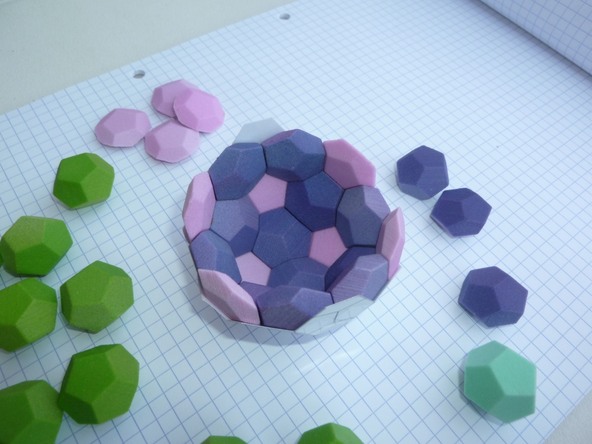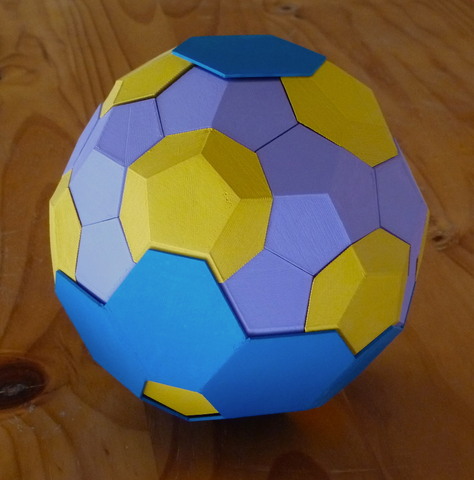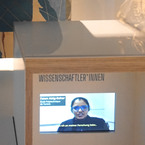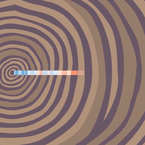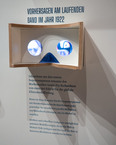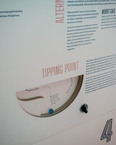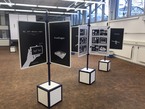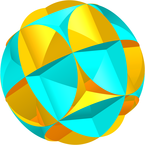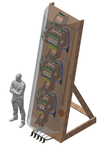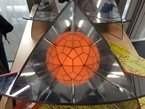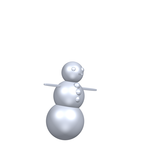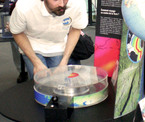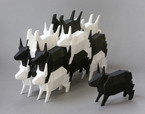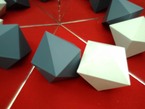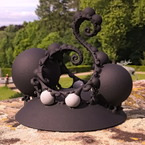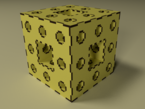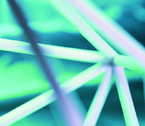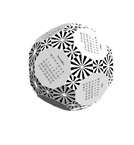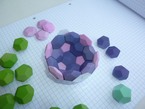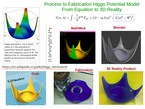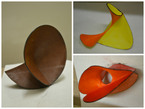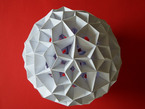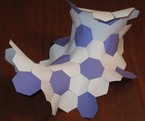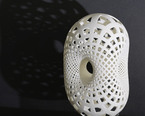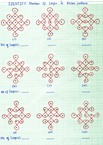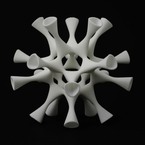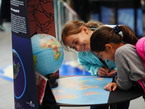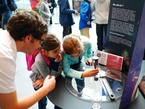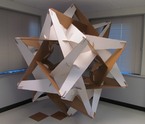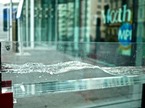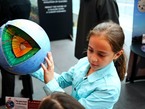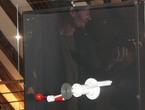120-cells
etkileşimli modüller
Lisans
Emeği Geçenler
An elegant 3D puzzle.
Put the 45 pieces back in the shell… and get an object that is the shadow of a hugely symmetric 4D object.
Each piece is a more or less flattened regular dodecahedron. The shell itself consists in completely flattend ones. The central piece is the only one that has been preserved.
Where does it come from? A 4D regular polytope called the 120-cell.
To have some idea of what this means, analogy is useful: a 3D regular polyhedron is a geometric object whose facets consist in identical regular polygons, arranged in an identical and regular way. A regular polytope is a 4D geometric figure whose facets (called cells) are identical 3D regular polyhedra, arranged in an identical and regular way. There are exactly 6 regular 4D polytopes, and they are respectively made of 5 tetrahedra, 8 cubes, 16 tetrahedra, 24 octahedra, 120 dodecahedra and 600 tetrahedra.
But a polytope sits in 4D, so how do we get back to 3D? By orthogonal projection.
Again, analogy helps: a photograph or a shadow is a (central) projection from the 3D world to the 2D plane of the screen/paper/floor/wall. A photograph taken from very far is an orthogonal projection. Or a shadow whose lamp is very far. On the photo, we only see the outer shell of the object, and we only see the side facing us. Similarly, one can project the polytope from 4D to 3D. We get to see only one half of the object, and each cell has become a more or less flattened dodecahedron. Take a cube, place it on a table and project it orthogonally to the table: you get a square. In fact, the top and bottom faces are projected to the same square. The 4 vertical faces are projected to 4 segments, bounding this square. A similar phenomenon holds for the 120-cell: there are 30 cells that get completely flattenend, because their supporting 3-space is orthogonal to the 3-space on which we project. The remaining 90 cells define two faces of the object, and we get to see only the front face, 45 celss projected to the 45 pieces of the puzzle. The 45 others are projected exactly to the same pieces.

